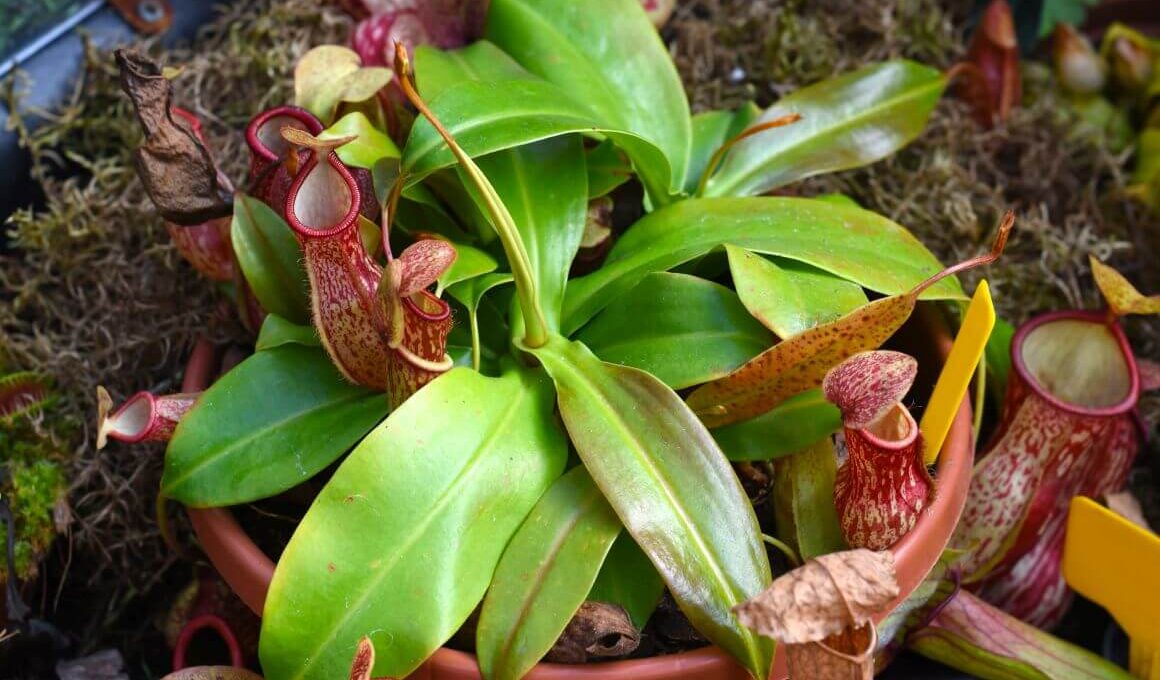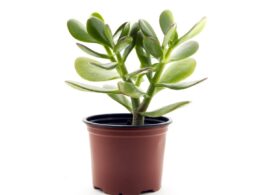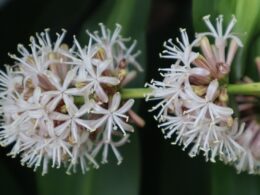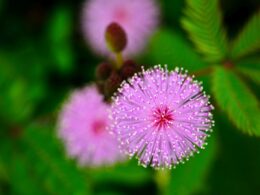In this article, we will discuss the care of pitcher plants in detail. We’ll cover everything from planting and watering to feeding and fertilizing. By following these tips, you can enjoy a healthy pitcher plant for many years to come!
Tropical Plants
Pitcher plants are native to tropical and subtropical regions around the world. They get their common name from their pitcher-shaped leaves, which are modified to trap insects and other small animals. Pitcher plants are fascinating creatures, and they make a great addition to any home or garden.
What’s a Carnivorous Plant?
A carnivorous plant is a plant that captures and digests animals, typically insects, in order to obtain nutrients that are otherwise unavailable in its habitat. The most common type of carnivorous plant is the pitcher plant, which gets its name from its large, tube-like leaves. Pitcher plants can be found in a variety of habitats, from tropical rain forests to temperate bogs. Most species trap their prey with sweet-smelling nectar, which attracts insects into the pitcher. Once inside, the bugs slip on the slick surface and tumble into the pitcher’s watery depths, where they drown. The pitcher then secretes digestive enzymes that break down the insect’s body, allowing the plant to absorb vital nutrients. While pitcher plants are the most common type of carnivorous plant, there are many other interesting varieties to choose from.
Pitcher Plant Care
When it comes to pitcher plant care, there are a few things you need to keep in mind. First of all, pitcher plants need plenty of sunlight. If possible, place your plant in a south-facing window where it will receive at least six hours of direct sunlight each day. If you live in a climate that is too hot or too cold for pitcher plants, you can grow them under artificial lights. These plants love distilled water and rainwater. Thus, try to avoid tap water, especially if it has a lot of minerals. Your pitcher plant will struggle in a terrarium, so these are not recommended.
Soil
For proper pitcher plant care, you will need well-drained soil. Be sure to use a potting mix, lime-free sand or perlite that is designed for carnivorous plants, as regular potting soil will not provide the right drainage. Pitcher plants like to grow in humid conditions, so misting your plant with distilled water on a regular basis is a good idea.
Feeding Pitcher Plants
Finally, pitcher plants need to be fed regularly. You can purchase special pitcher plant food at your local nursery or garden center, or you can make your own by blending equal parts of meaty foods such as chopped liver or shrimp with water. Feed your plant every two weeks during the growing season and once per month during the winter months. With proper care, your pitcher plant will thrive and provide you with years of enjoyment!
How to Care for Pitcher Plant Indoors
Pitcher plant care is unique! These beautiful carnivorous plants make a great addition to any indoor garden. But how do you care for them? Here are some tips:
- Pitcher plants need lots of sunlight, so make sure to place them in a sunny spot.
- They also prefer high humidity, so mist them regularly or set them on a pebble tray filled with water.
- Keep the soil moist but not soggy, and fertilize every few weeks with a half-strength carnivorous plant fertilizer.
- Lastly, be careful not to overpot your pitcher plant. The pot should only be slightly larger than the root ball, as too much room can lead to poor drainage and stagnant water, which can lead to problems with pests and diseases.
Types of Pitcher Plants
Here are 5 types of the tropical pitcher plant. Be aware that there are countless hybrids of the Sarracenia.
- Purple Pitcher Plant Sarracenia Purpurea;
- California Pitcher Plant Darlingtonia Californica;
- White Trumpet Pitcher Plant Sarracenia Leucophylla;
- Sun Pitcher Plant Heliamphora Spp;
- Yellow Pitcher Plant Sarracenia Flava.
Pitcher Plant Problems
The pitcher plant is a beautiful and unique flower that has long been a favorite of gardeners. However, these plants can sometimes experience problems that cause them to wilt and die. One common issue is lack of water. Pitcher plants need a lot of moisture to thrive, so it is important to water them regularly. Another problem that can affect pitcher plants is too much sun. These plants prefer shady areas, so they may suffer if they are placed in a sunny spot. If your pitcher plant is wilting or dying, be sure to check for these common problems before you give up on it completely. With a little care and attention, you may be able to revive your plant and enjoy its beauty for many years to come.
Propagating Pitcher Plants
Pitcher plants are unique and interesting carnivorous plants that can be propagated fairly easily. The best time to propagate them is in late summer or early fall. First, you will need to find a healthy mother plant. Cut off a stem that has several leaves and nodding pitchers. Be sure to use a sharp knife or shears and sterilize it with rubbing alcohol to prevent infection. Next, strip the lower leaves from the stem, leaving about 2-3 inches of bare stem. Dip the cut end of the stem into rooting hormone and then plant it in a pot filled with moistened sphagnum peat moss. Place the pot in a clear plastic bag and then put it in a warm, sunny location. Keep the moss moist but not soggy, and in about six weeks, you should see new growth. Once the plant is well-rooted, you can transplant it into a larger pot or into your garden.
So, ready to grow a carnivorous houseplant? Pitcher plant care complete! See you soon!



















